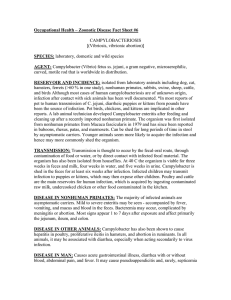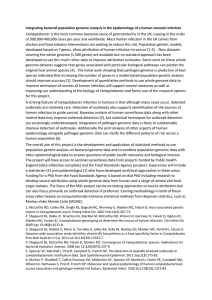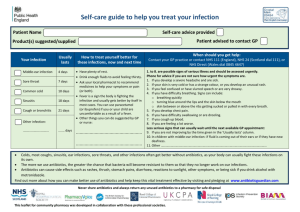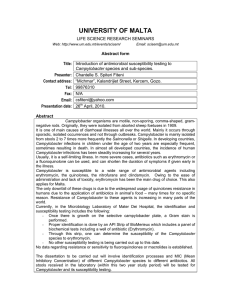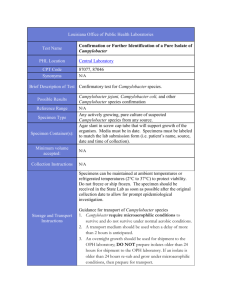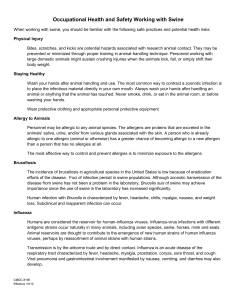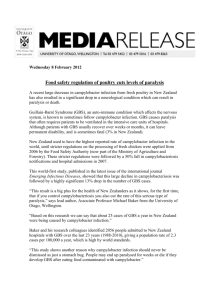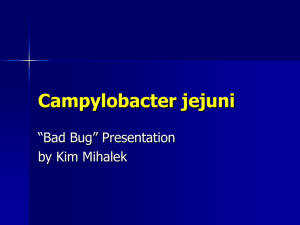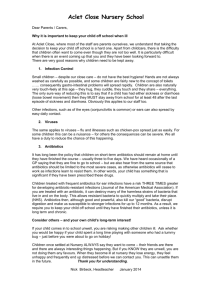Campylobacteriosis v1.1
advertisement
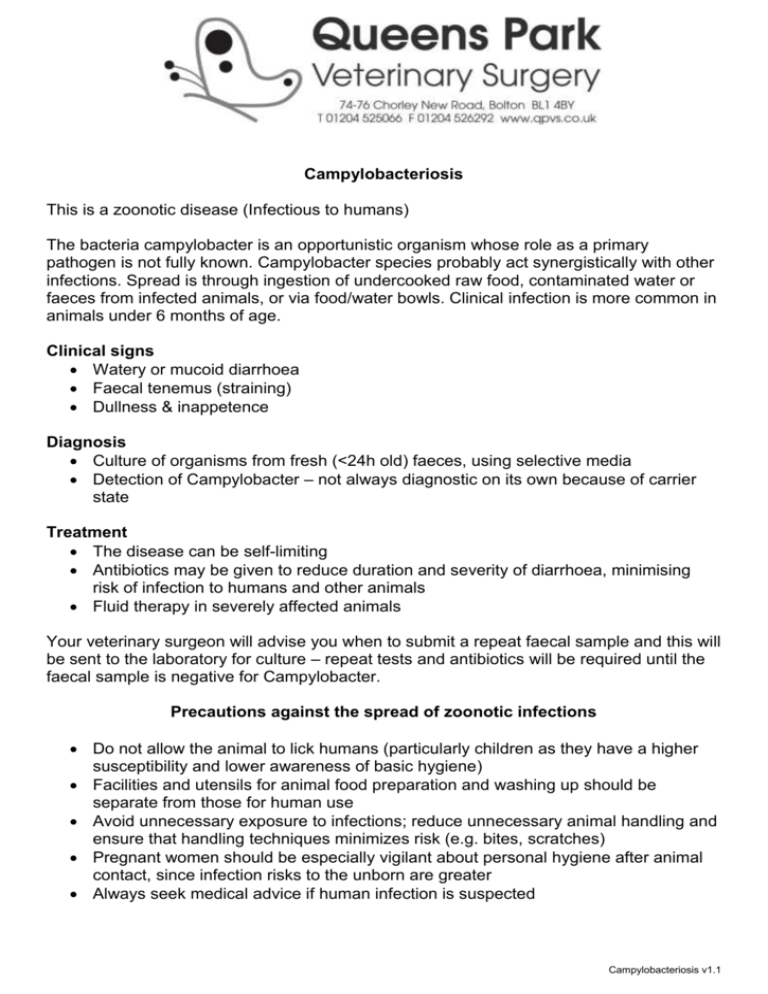
Campylobacteriosis This is a zoonotic disease (Infectious to humans) The bacteria campylobacter is an opportunistic organism whose role as a primary pathogen is not fully known. Campylobacter species probably act synergistically with other infections. Spread is through ingestion of undercooked raw food, contaminated water or faeces from infected animals, or via food/water bowls. Clinical infection is more common in animals under 6 months of age. Clinical signs Watery or mucoid diarrhoea Faecal tenemus (straining) Dullness & inappetence Diagnosis Culture of organisms from fresh (<24h old) faeces, using selective media Detection of Campylobacter – not always diagnostic on its own because of carrier state Treatment The disease can be self-limiting Antibiotics may be given to reduce duration and severity of diarrhoea, minimising risk of infection to humans and other animals Fluid therapy in severely affected animals Your veterinary surgeon will advise you when to submit a repeat faecal sample and this will be sent to the laboratory for culture – repeat tests and antibiotics will be required until the faecal sample is negative for Campylobacter. Precautions against the spread of zoonotic infections Do not allow the animal to lick humans (particularly children as they have a higher susceptibility and lower awareness of basic hygiene) Facilities and utensils for animal food preparation and washing up should be separate from those for human use Avoid unnecessary exposure to infections; reduce unnecessary animal handling and ensure that handling techniques minimizes risk (e.g. bites, scratches) Pregnant women should be especially vigilant about personal hygiene after animal contact, since infection risks to the unborn are greater Always seek medical advice if human infection is suspected Campylobacteriosis v1.1
